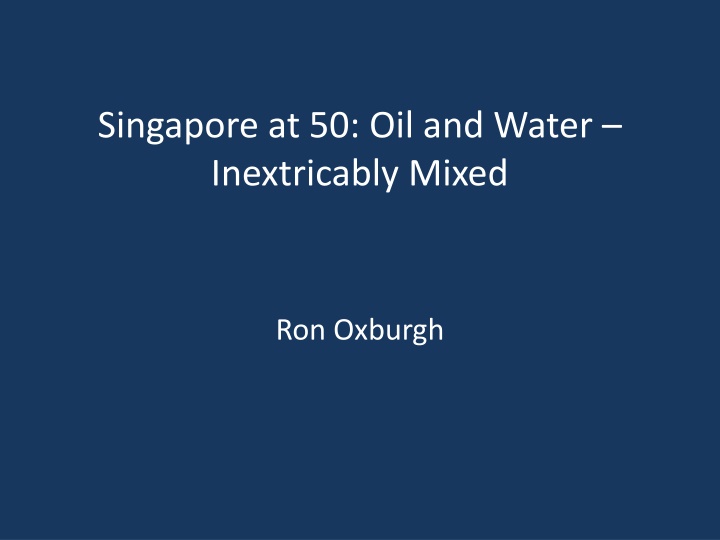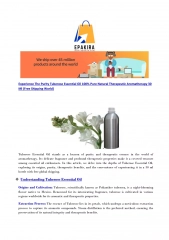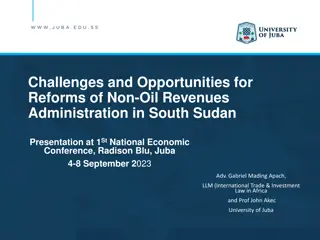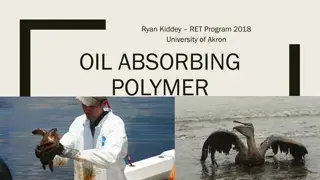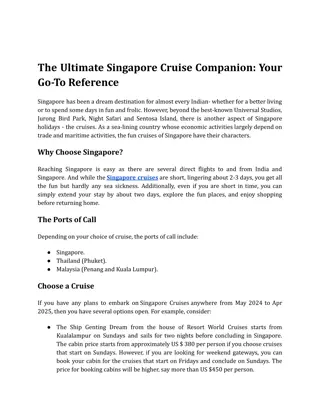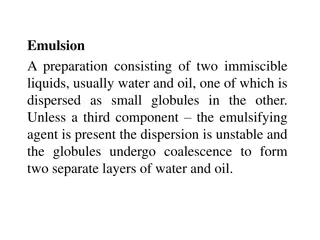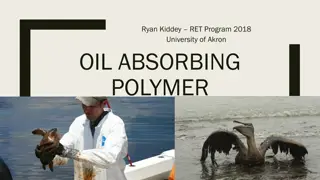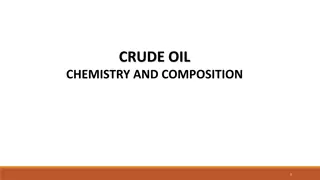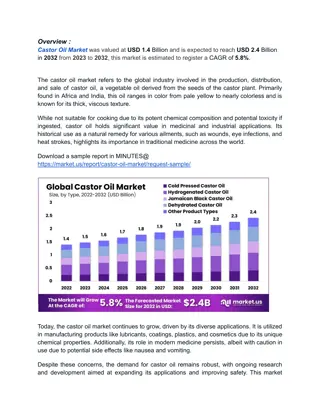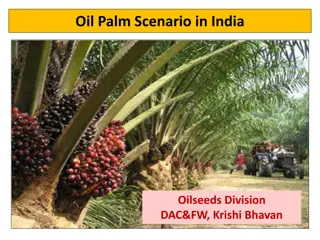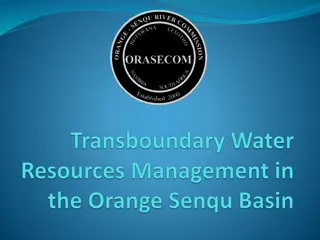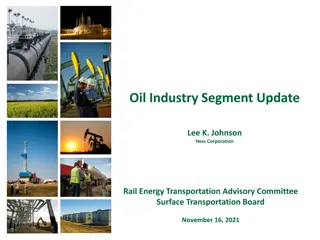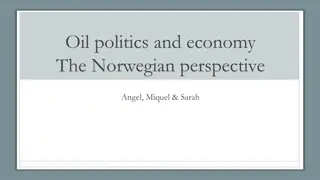Singapore at 50: Oil and Water Mix
In this collection of images and data visualizations, the intertwining relationship between oil, water, energy, and the environment is explored. It delves into the global population growth over the past 12,000 years, the dependence of megacities on surface water, the energy consumption patterns of today, the impact of fossil fuels on energy sources, water usage trends, universal water demands, and the link between oil and water. It also highlights the crucial role of water in various aspects of life and the environmental consequences of greenhouse gas emissions, particularly ocean warming.
Download Presentation

Please find below an Image/Link to download the presentation.
The content on the website is provided AS IS for your information and personal use only. It may not be sold, licensed, or shared on other websites without obtaining consent from the author.If you encounter any issues during the download, it is possible that the publisher has removed the file from their server.
You are allowed to download the files provided on this website for personal or commercial use, subject to the condition that they are used lawfully. All files are the property of their respective owners.
The content on the website is provided AS IS for your information and personal use only. It may not be sold, licensed, or shared on other websites without obtaining consent from the author.
E N D
Presentation Transcript
Singapore at 50: Oil and Water Inextricably Mixed Ron Oxburgh
World Population last 12,000 years 8000 7000 6000 5000 MILLION 4000 3000 2000 1000 0 Years
Megacities >15 million people 25 Majority depend on surface water and are water stressed 20 15 10 5 0 1970 1980 1990 2000 2010 2020
Energy & People 8000 Today 7000 millions people 6000 5000 1978 4000 1965 3000 2000 2000.0 4000.0 millions barrel oil equivalent per year 6000.0 8000.0 10000.0 12000.0 4
Energy & People 8000 ca. 80% of energy from fossil fuels Today 7000 millions people 6000 5000 1978 4000 1965 3000 2000 2000.0 4000.0 millions barrel oil equivalent per year 6000.0 8000.0 10000.0 12000.0 5
World Water Use & People 8 7 2010 6 People, billion 1990 5 4 1970 3 1950 2 1900 1 0 0 1000 2000 3000 4000 5000 Billion m3 water pa
The Three Universal Water Demands AGRICULTURE 70% 300 7 URBAN & INDUSTRY World population billion 6 250 5 NATURAL SYSTEMS 200 Million hectare 4 30% 150 3 100 What s left ! 2 50 1 0 0 1800 1900 2000
The oil / water link Energy is needed to: Purify water Move water Water is essential to: Cool all conventional power plants Can provide hydro power Waste water & sewage for energy Modern life depends on both but: Oil ca. 1000 times more expensive than water We use ca. 1000 times more water than oil SO: cost effective to move oil long distances but not water water needs are met locally while oil can be imported
Greenhouse Gases & the Environment Ocean Warming: Sea level rise More energy into weather systems Ocean acidification The science suggests: Marine life problems Rainfall changes distribution & amount Droughts Extreme storms
SEA LEVEL Ocean Warming
CO2 in Atmosphere & Ocean Ocean Acidification: A Critical Emerging Problem for the Ocean SciencesBy S.C. Doney, W.M. Balch, V.J. Fabry, and R.A. Feely
World CO2 Emissions by Fossil Fuels 50000 45000 SERIOUS DANGER Gas for coal only a bridge CCS? Oil Alternatives? 40000 10^6 tons CO2/yr 35000 30000 25000 20000 15000 10000 Oil 36% of FF emissions (33% of all energy) 5000 0 2005 2007 2009 2011 2013 2015 2017 2019 2021 2023 2025 2027 2029 2031 2033 2035 EIA, 2012
Abating CO2 not easy! Power systems are expensive, last for decades, slow to change In developing countries, increase in electricity demand is most cheaply met by coal Renewables seen as more expensive in near term and, without a means of energy storage, inflexible In long term fossil fuels will be displaced only by cheaper alternatives SO: Improve technology & reduce cost of renewables - STORAGE! Use FF sparingly and efficiently While fossil fuel continue to be used, need to control emissions - Carbon capture & storage CCS
Carbon Capture and Storage 70% cost Capture Transport 10% COAL CO2 20% Storage COAL MINE CO2 Present technology would increase electricity cost by 30-50% Same as off-shore wind? Water requirement increased by around 30%
Most of Chinas electricity still generated by coal
For CCS to become globally significant the additional costs of generating electricity must fall below 10%
Singapore 2015 What does a small, resource-poor but highly educated city state have to offer? Technologies for environmental challenges Test-bed for new approaches to dense city living
Thames Pollution LONDON 1858 river used as a sewer! Parliament suspended
Singapore beautiful but water-poor 5.3 million People 714 km2 area 2525 mm annual rain High evaporation
Meeting Singapore s Water Needs Ocean Rain Reservoirs Used water treatment Desalination NEWater Imports 25% 25% Potability Treatment Used water collection 50% Supply to people & industry
Focussed Investment in Water R&D Among other areas, major investment in water research in: Industry, Government Institutes & Universities Successful local start-up companies Multinationals attracted to do research locally Highly successful biennial international Water week In little over ten years Singapore has become a major international water player
Megacities Many megacities unplanned Grow ahead of the necessary infrastructure High population densities Typically problems with water, sewage, energy, traffic etc. Singapore not a megacity but: Dense population: over 5 million people in ca. 700km2, rainfall of ca 2000mm High quality of life made possible by strategies and technologies developed over last 50 years Many lessons that may be useful in growing megacities
Quality of life at 7500people/km2 Coherent and integrated approach to infrastructure Space - dig deep & build high! Green spaces within the city Strategic approach to water supply Reservoirs and catchments for recreation as well as water Controlled traffic Vehicle numbers limit Traffic management Public transport
Jurong Island, Singapore
Conclusions World population, energy & water demand, and G-H gases in the atmosphere - all rising Urgent to avoid damaging climate change by reducing FF dependence and abating emissions Locally water & energy shortages inhibit development Singapore a good model for alleviating water problems by strategy and technology With 50 years of inspired and inspirational leadership Singapore has evolved from a poor, water-stressed developing country to a leading developed country
Effects FRESH WATER CLIMATE Human 9 B PEOPLE PLANTS & Other Life ENERGY FOOD For CCS to become globally significant the additional costs of generating electricity must fall below 10%
